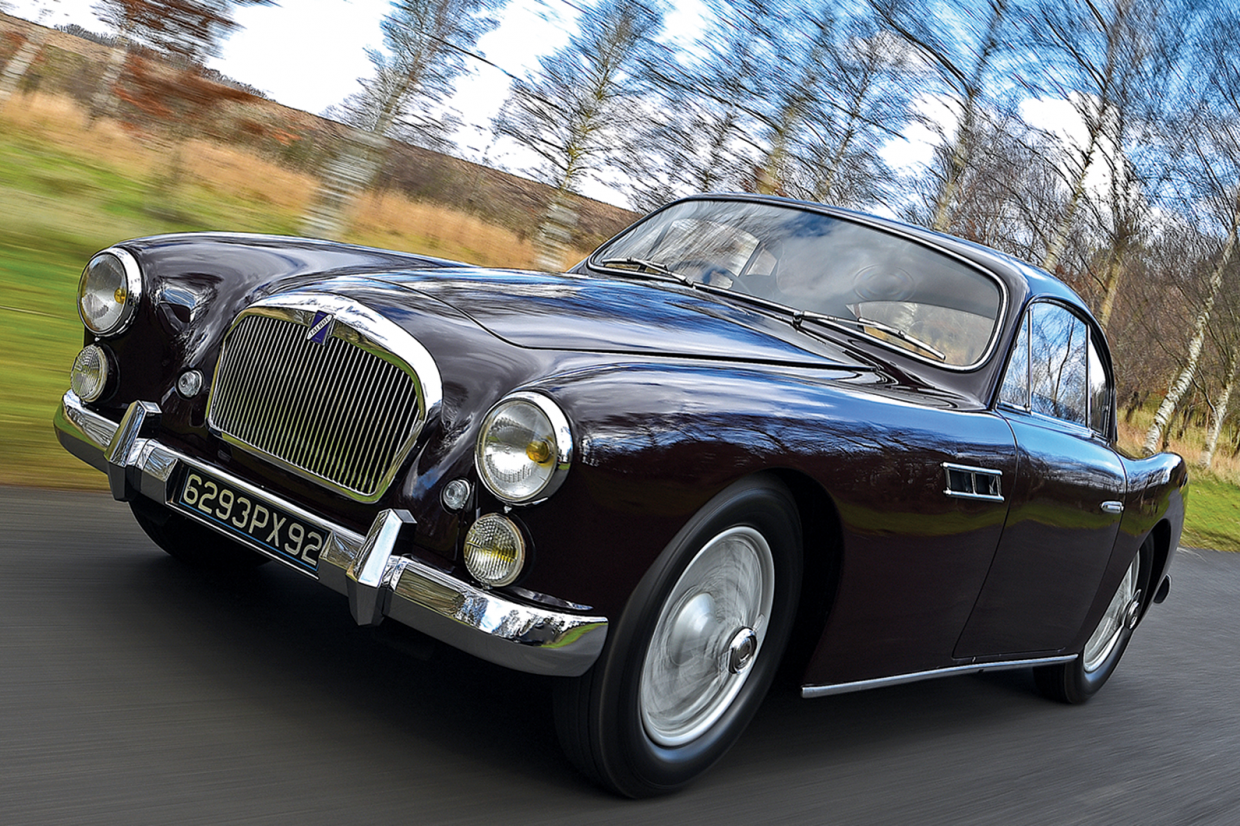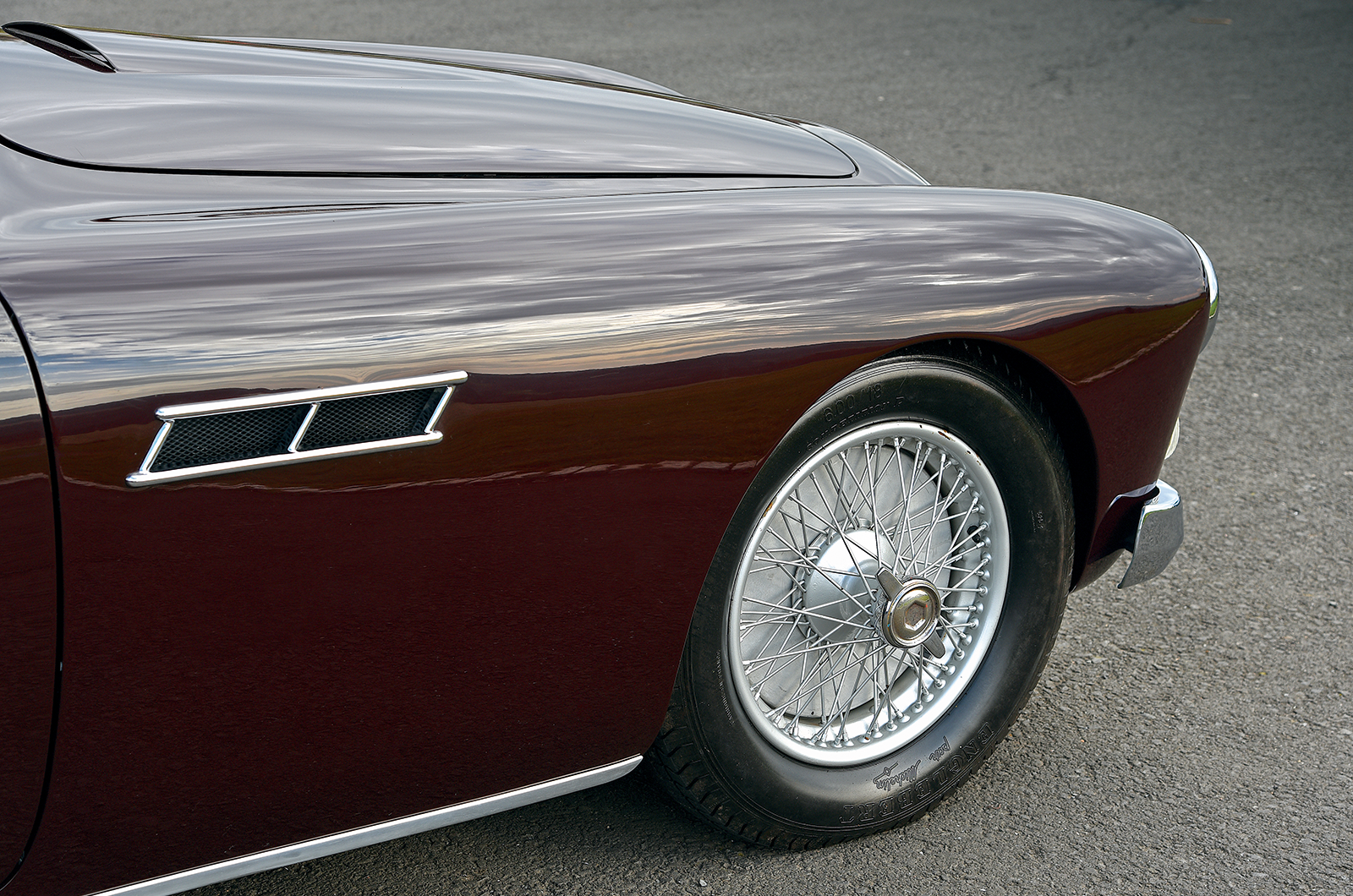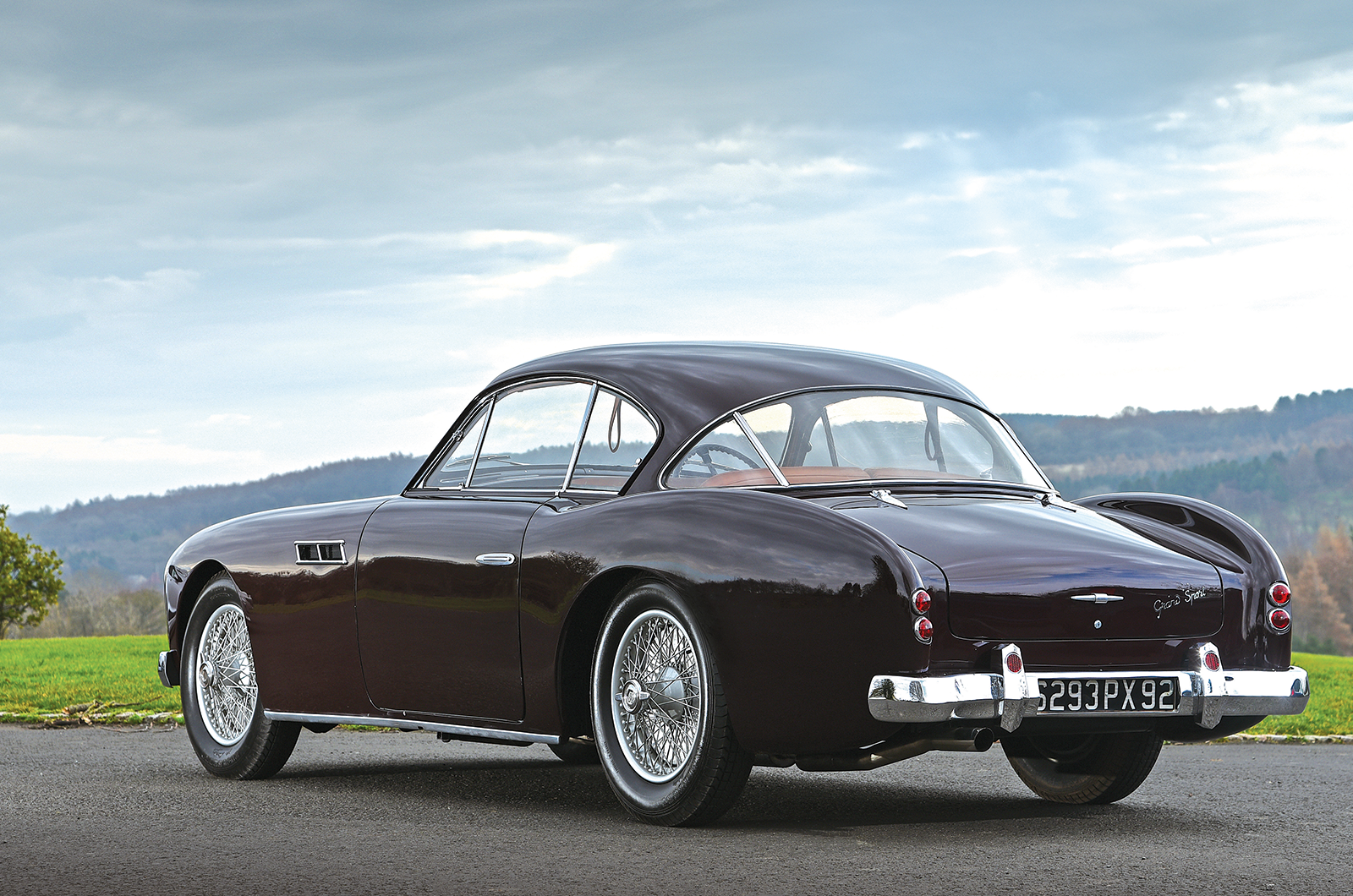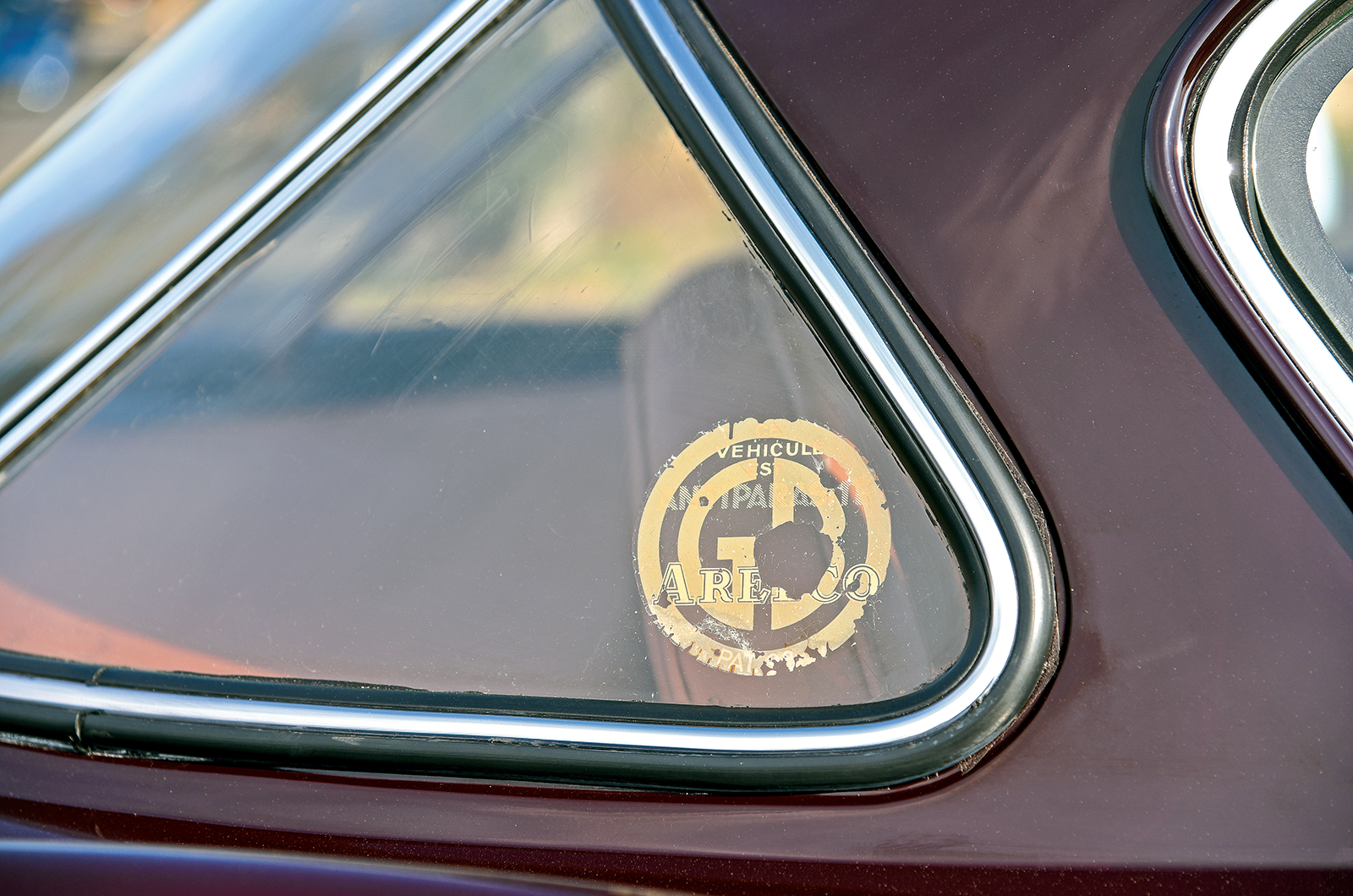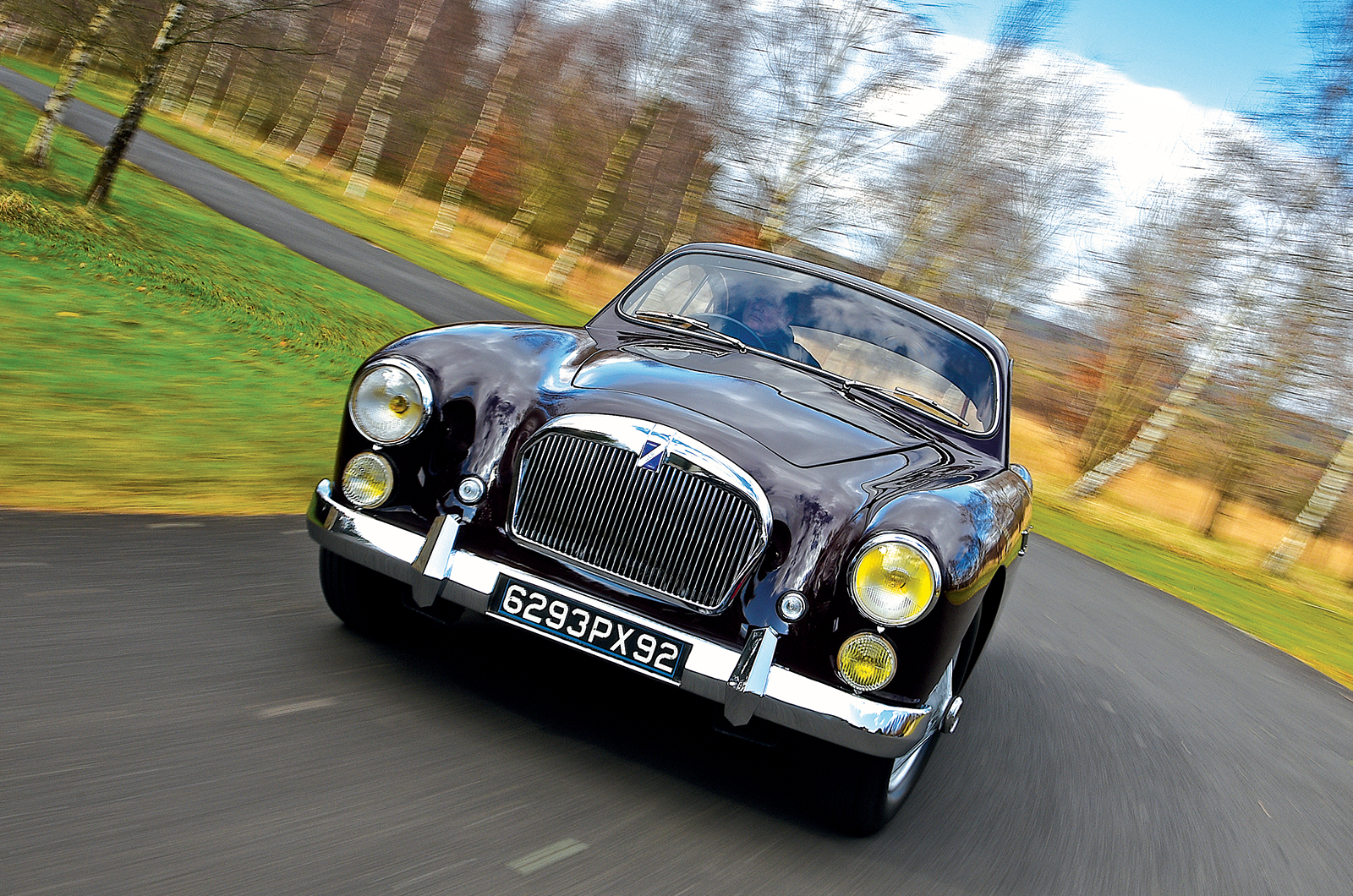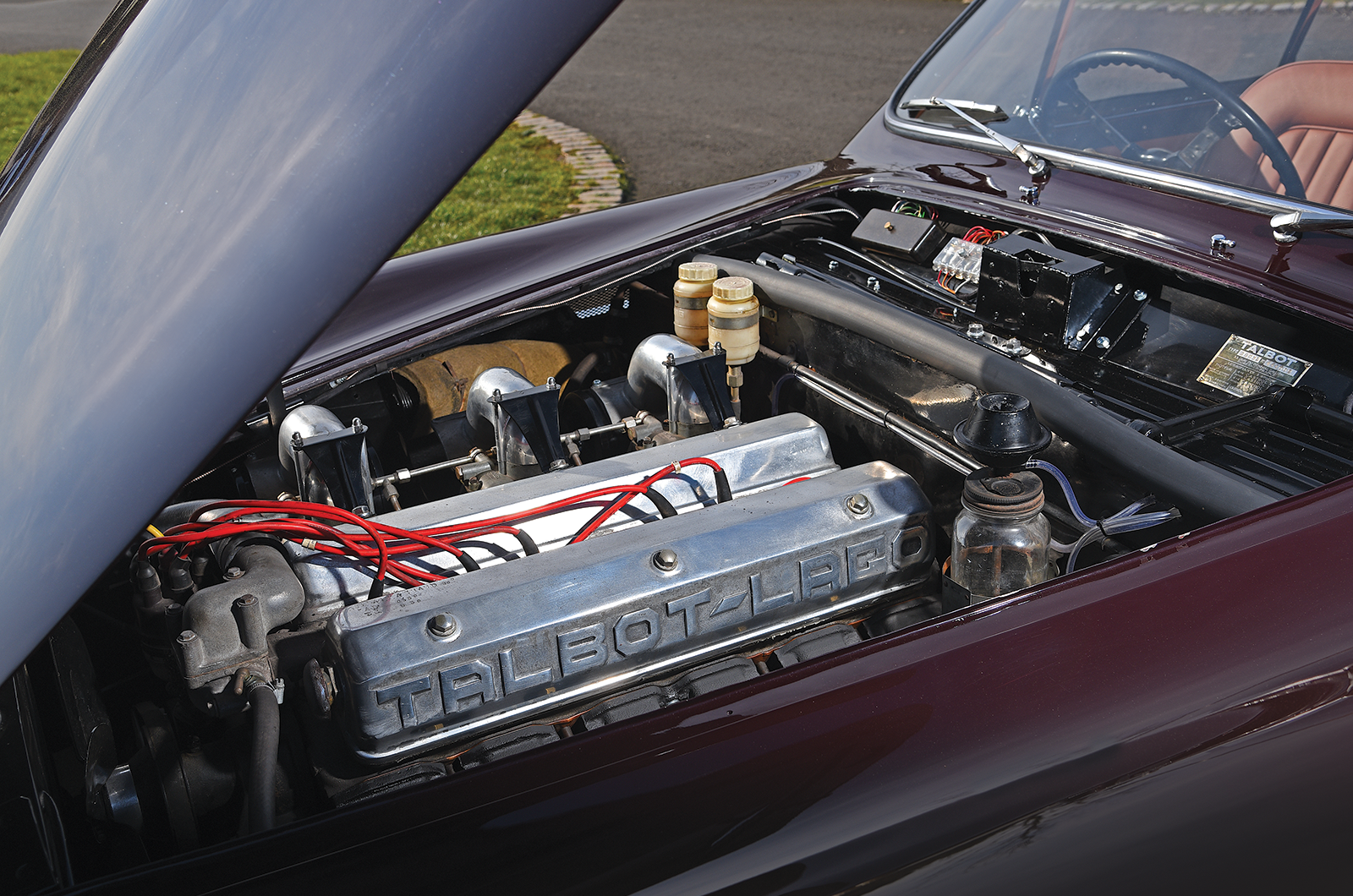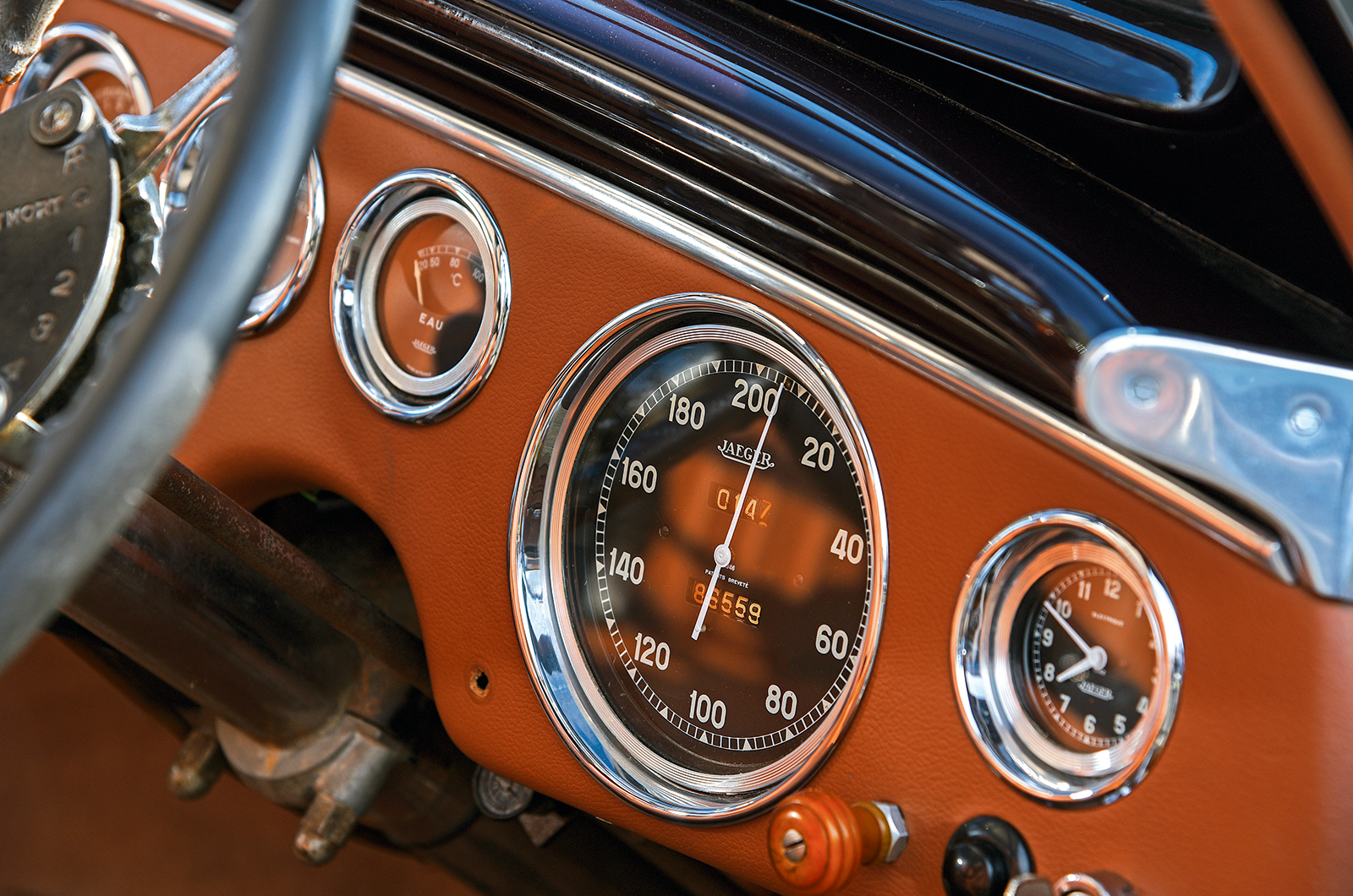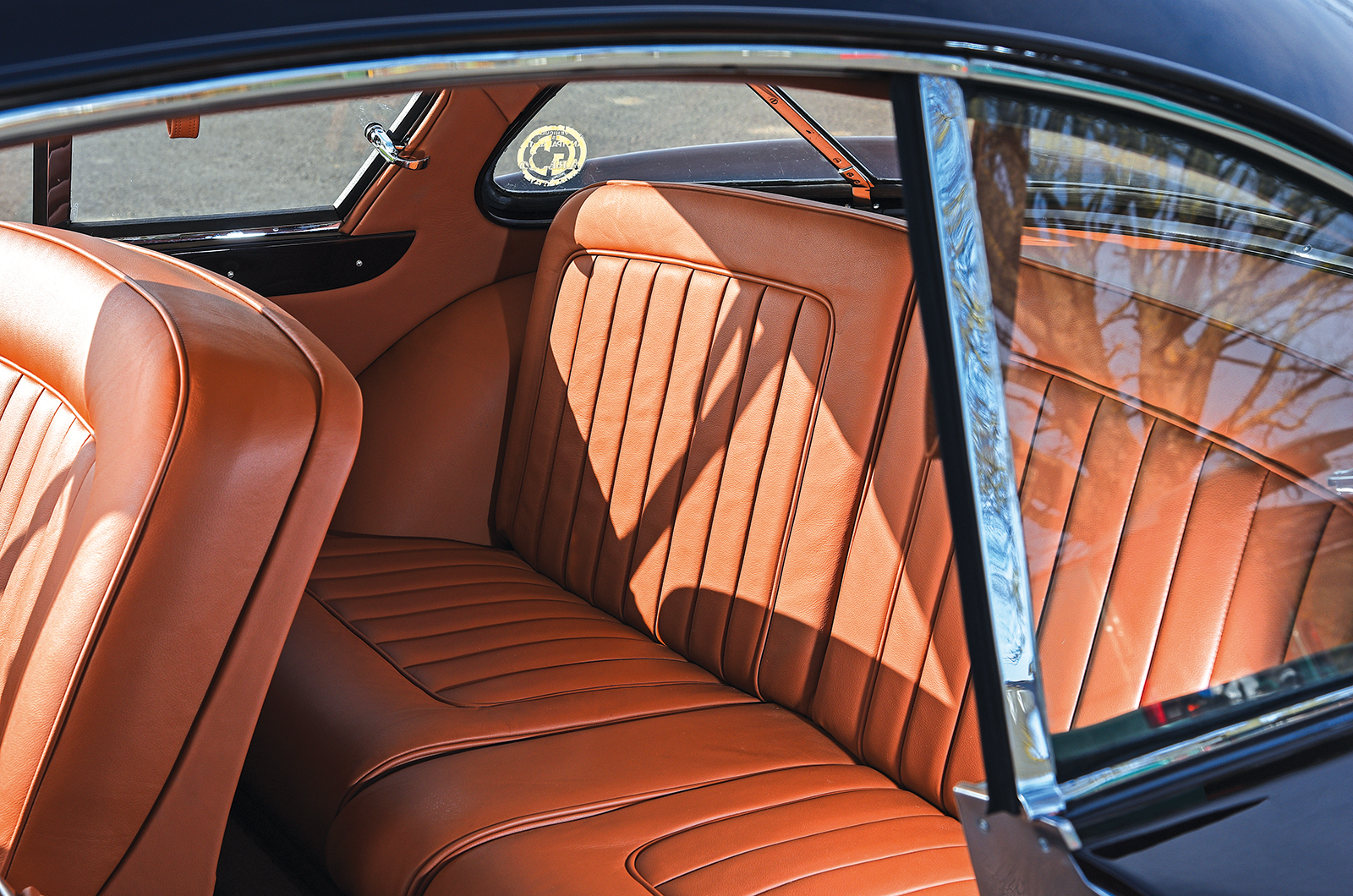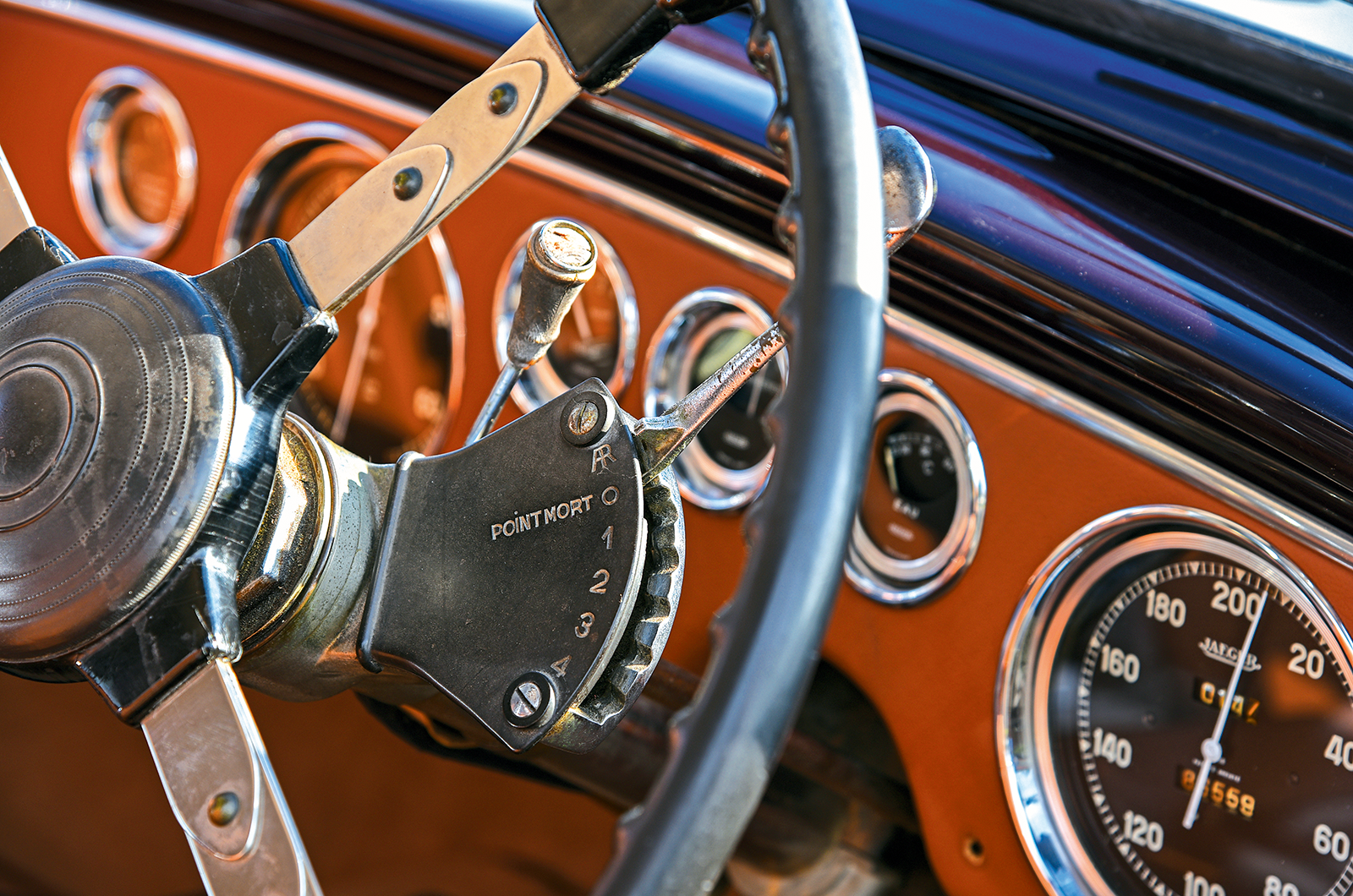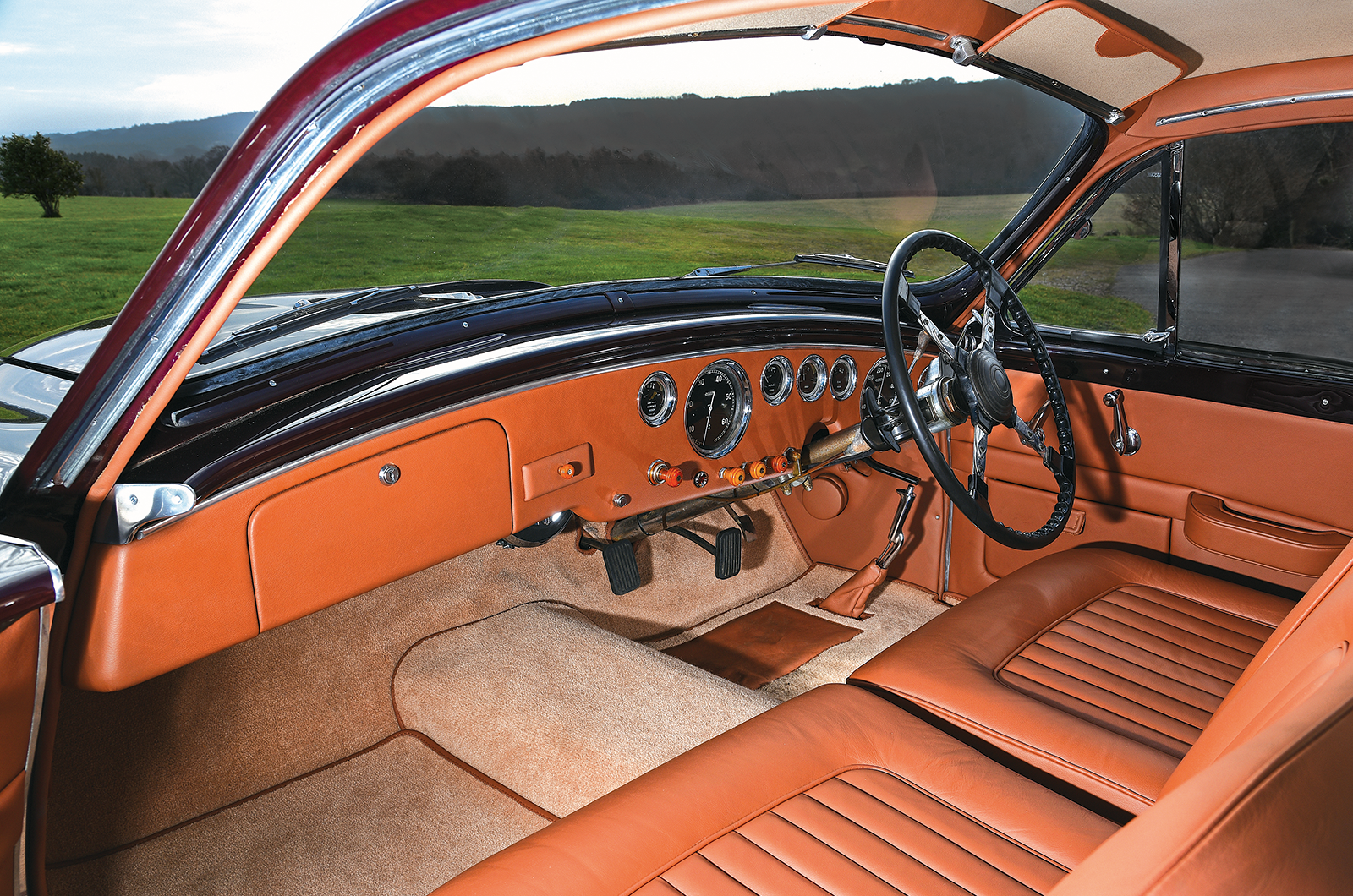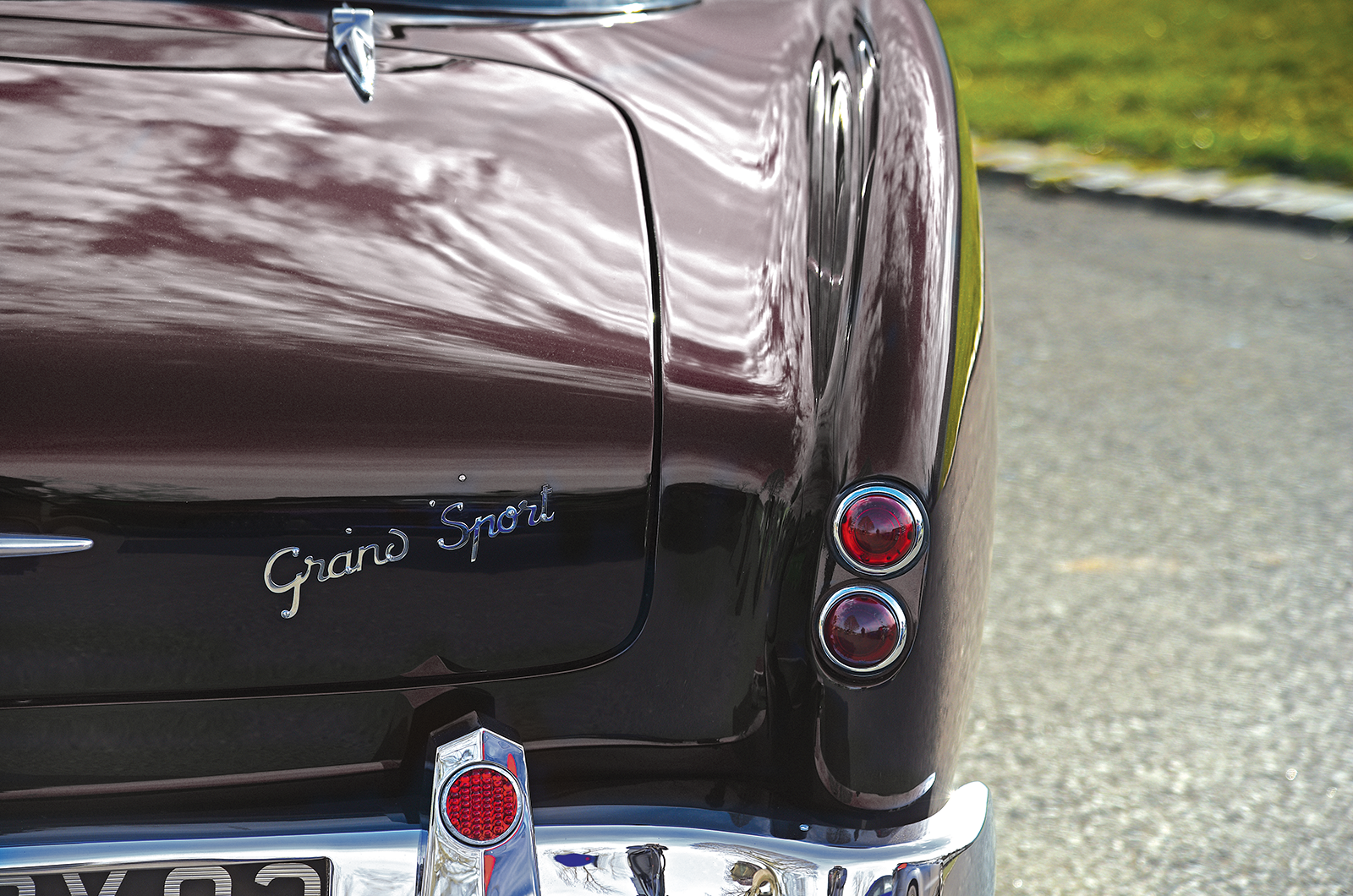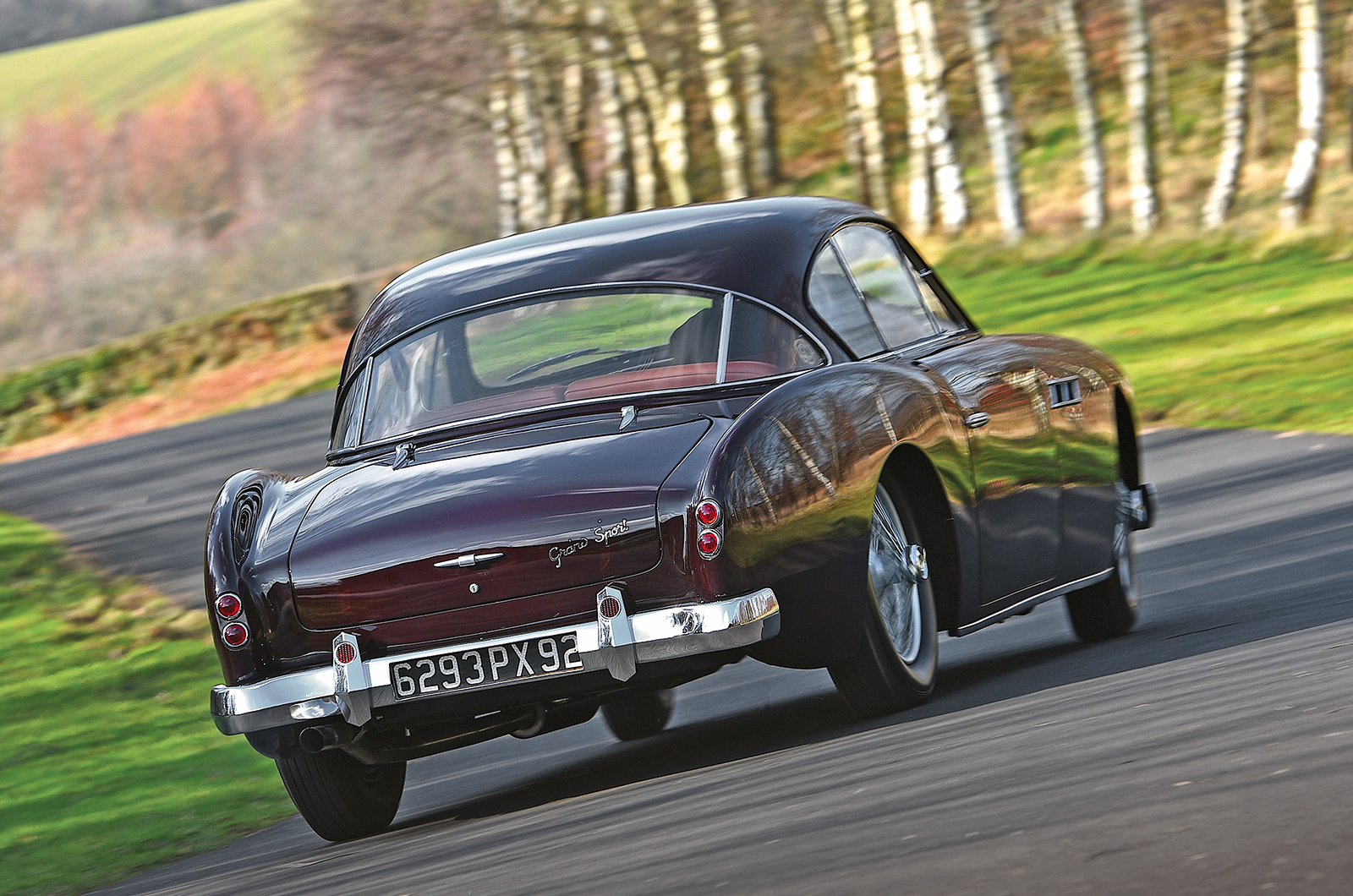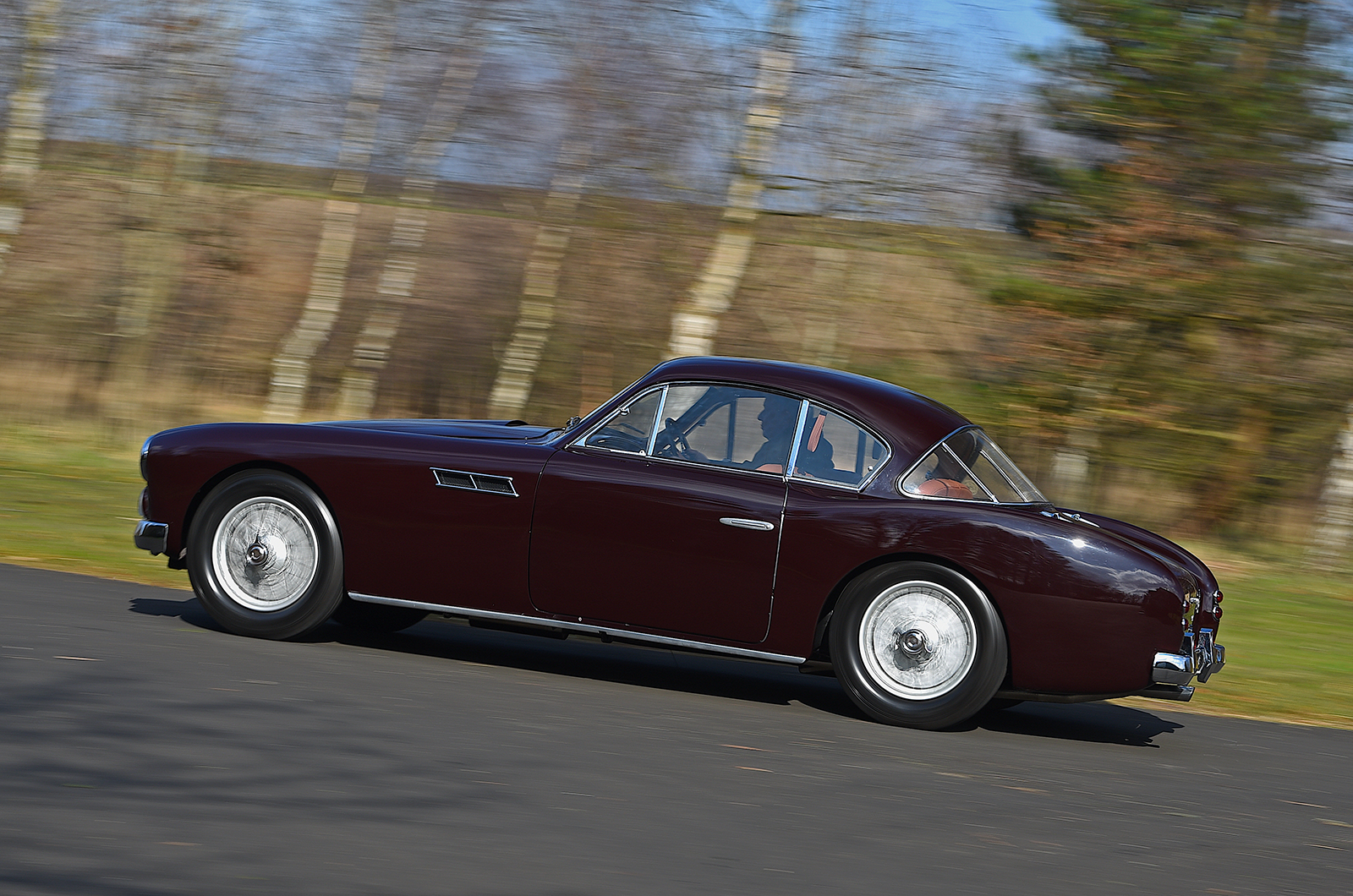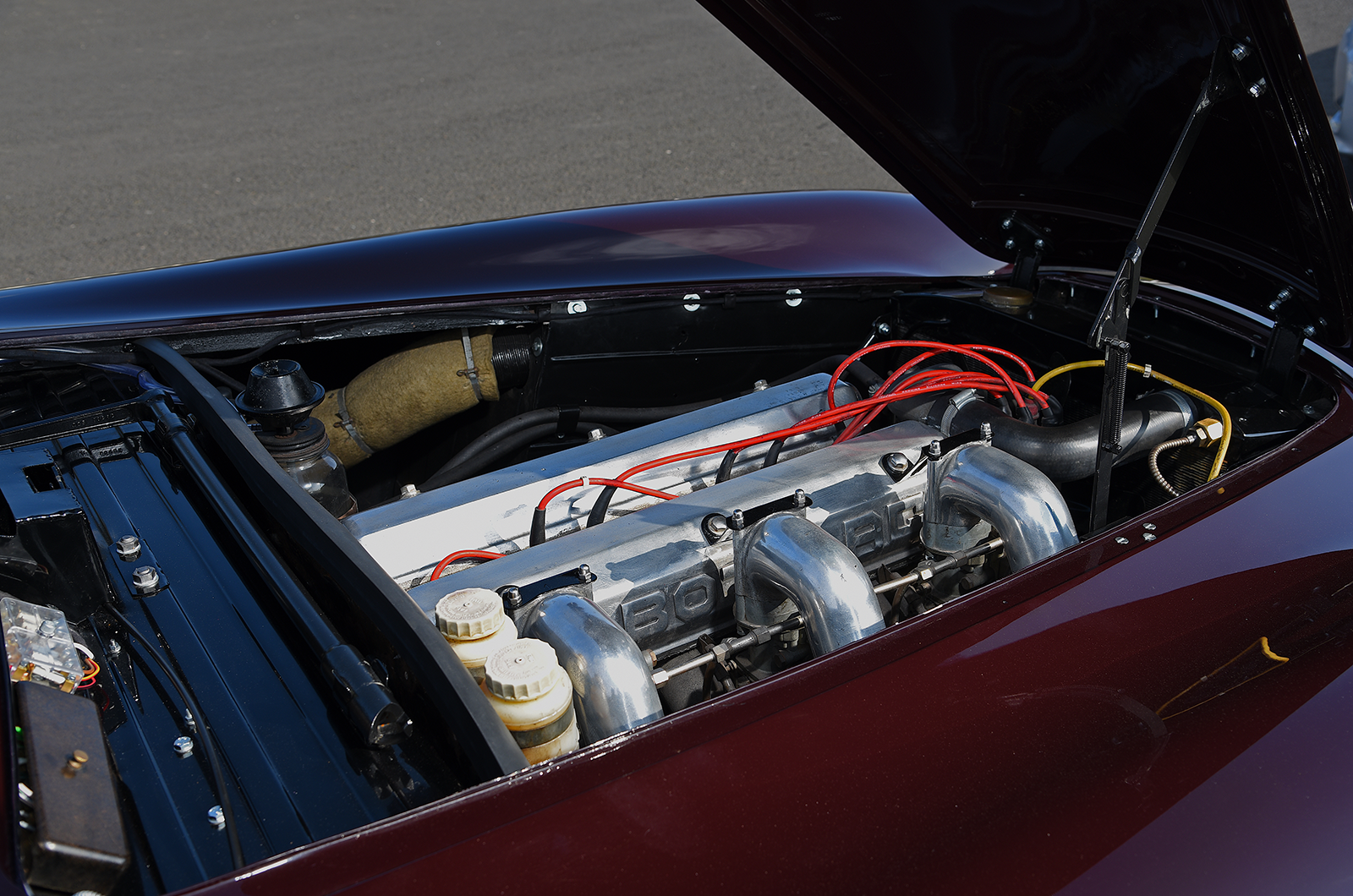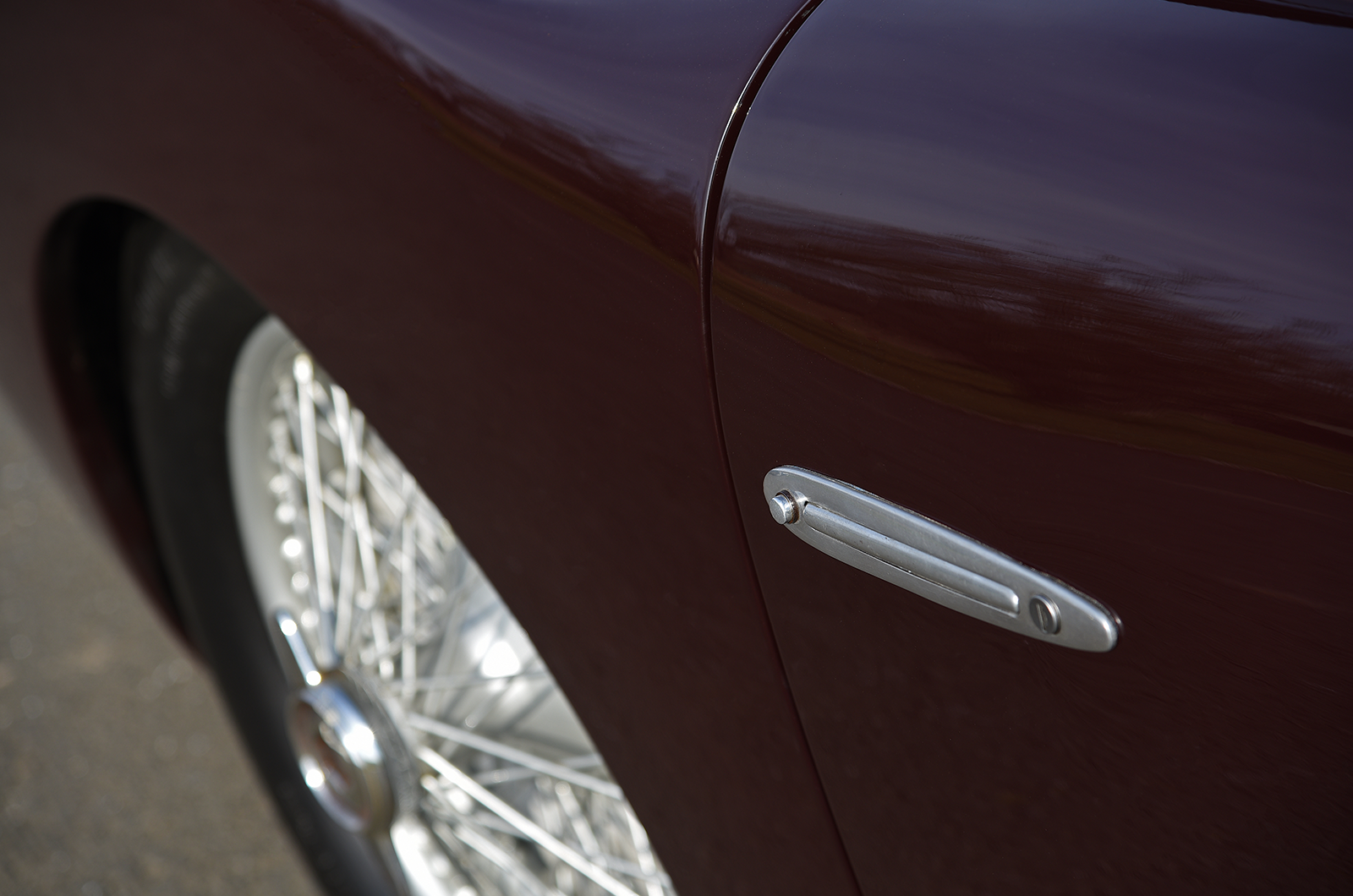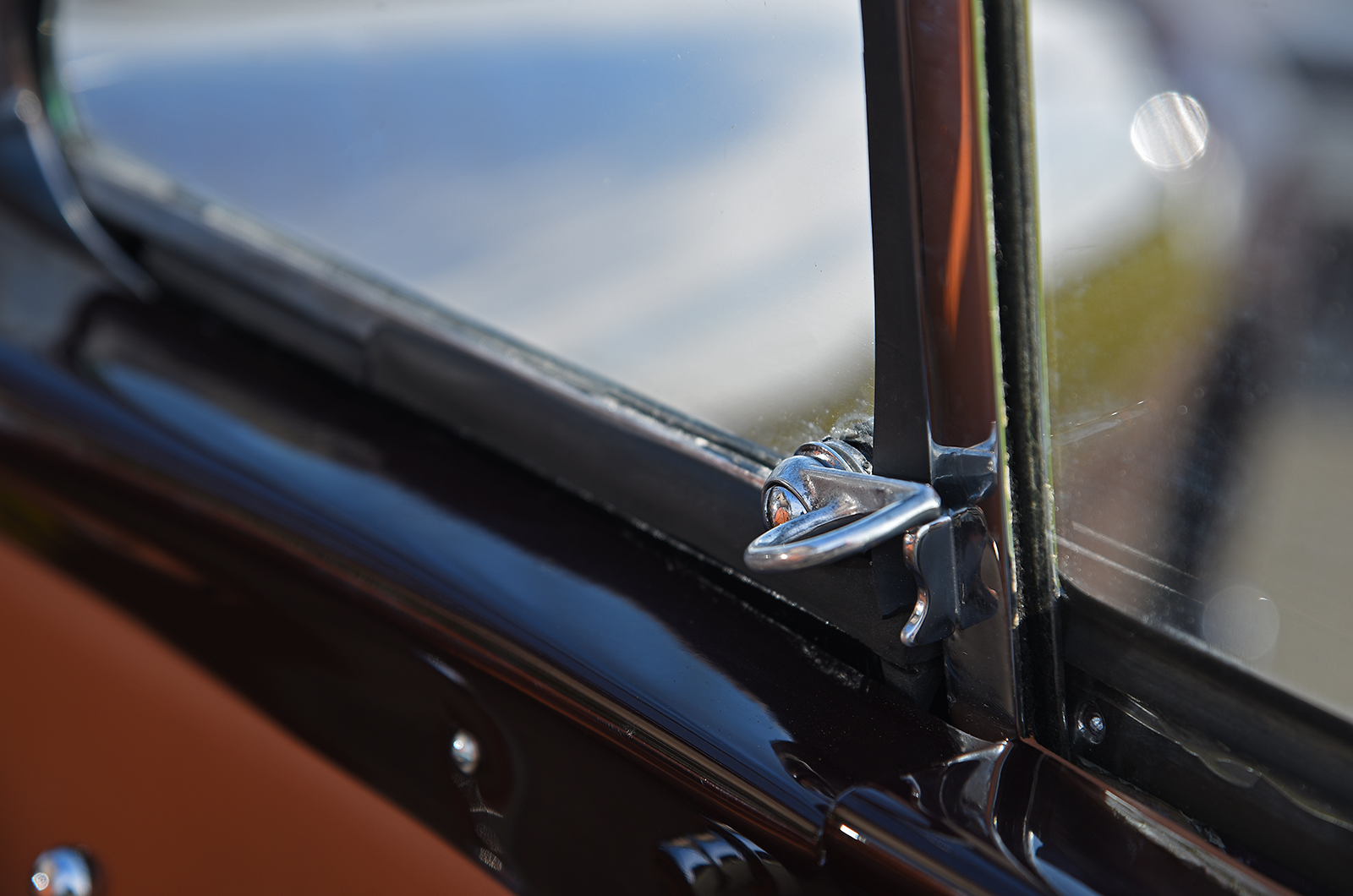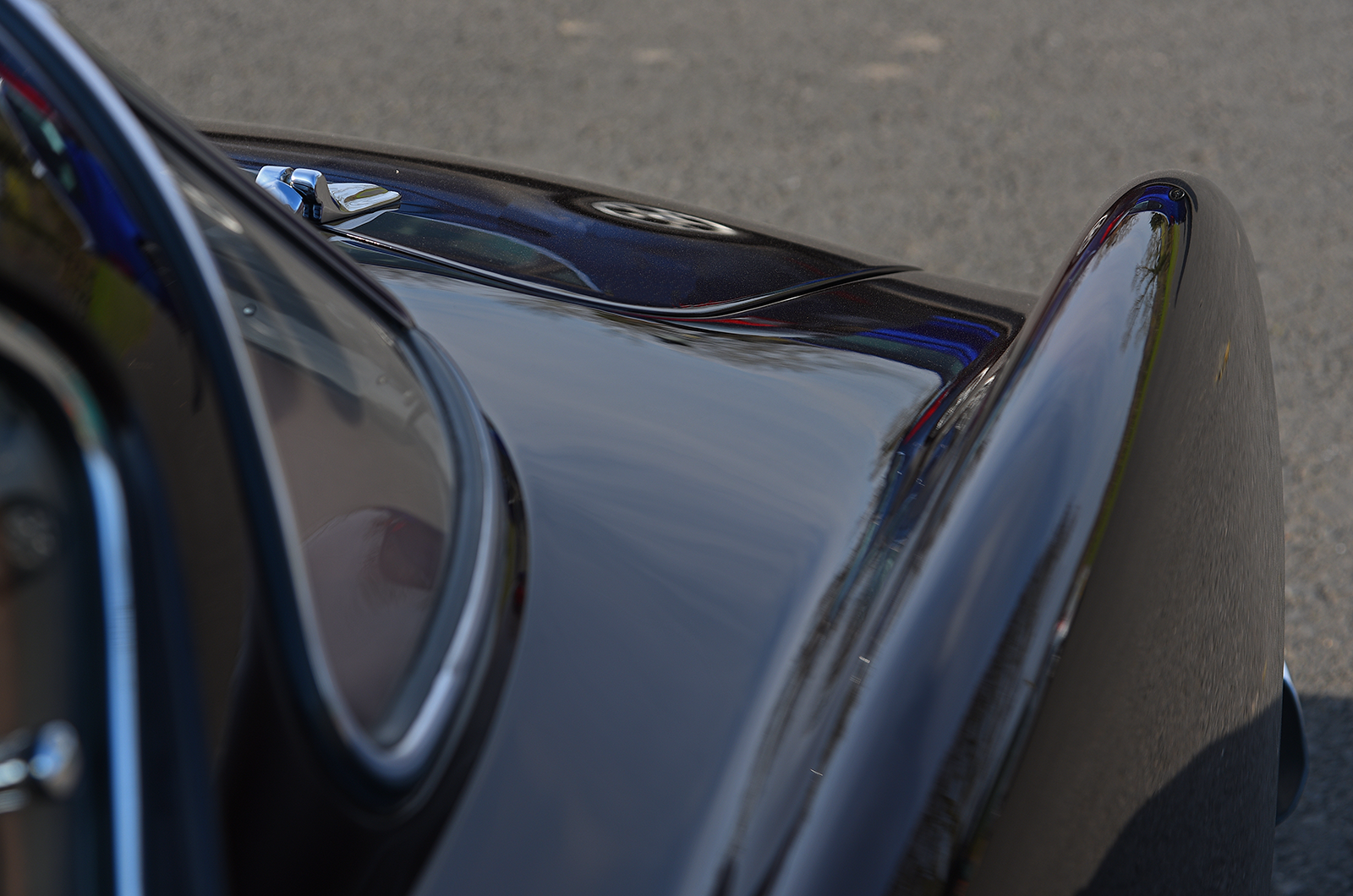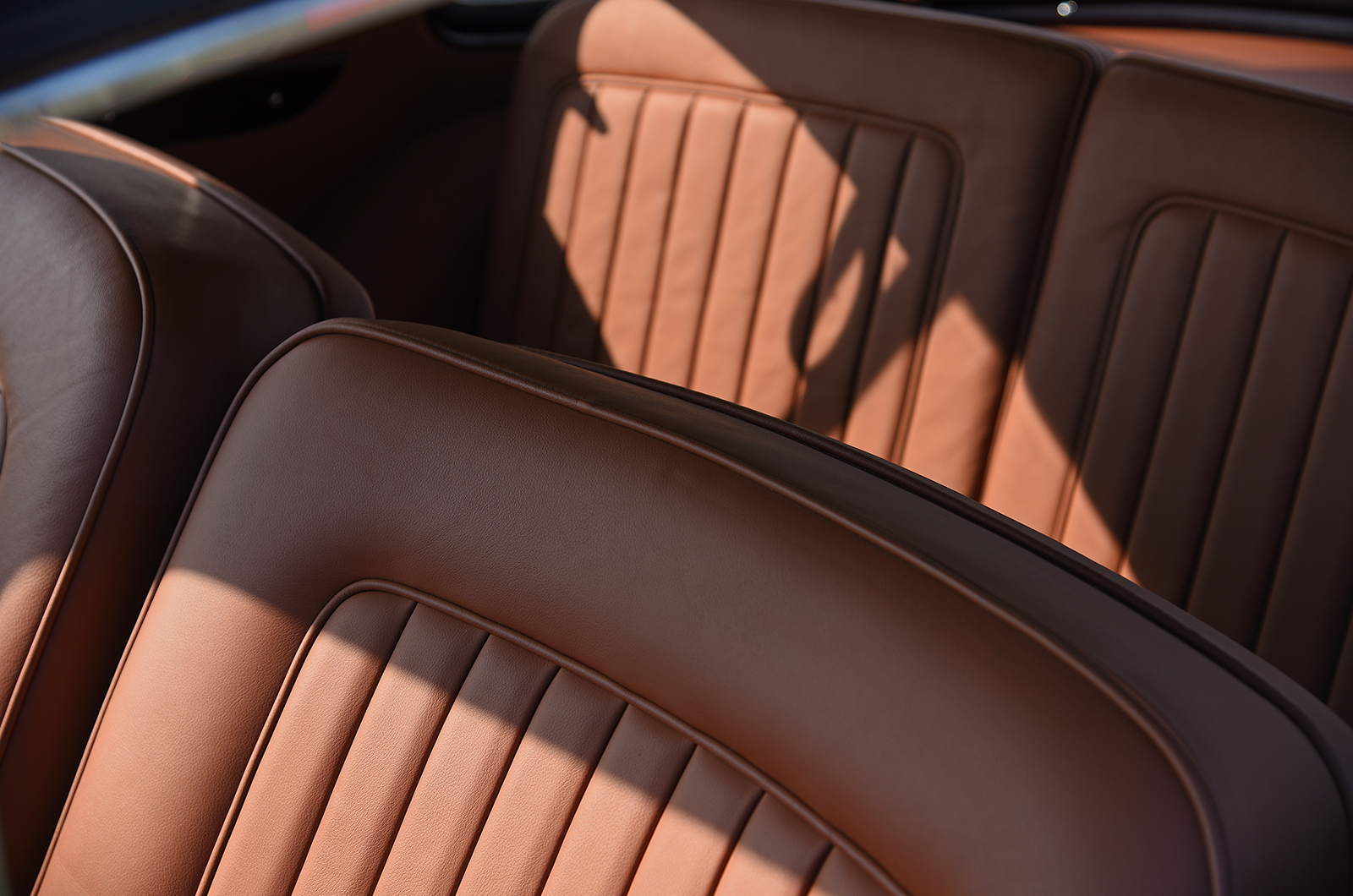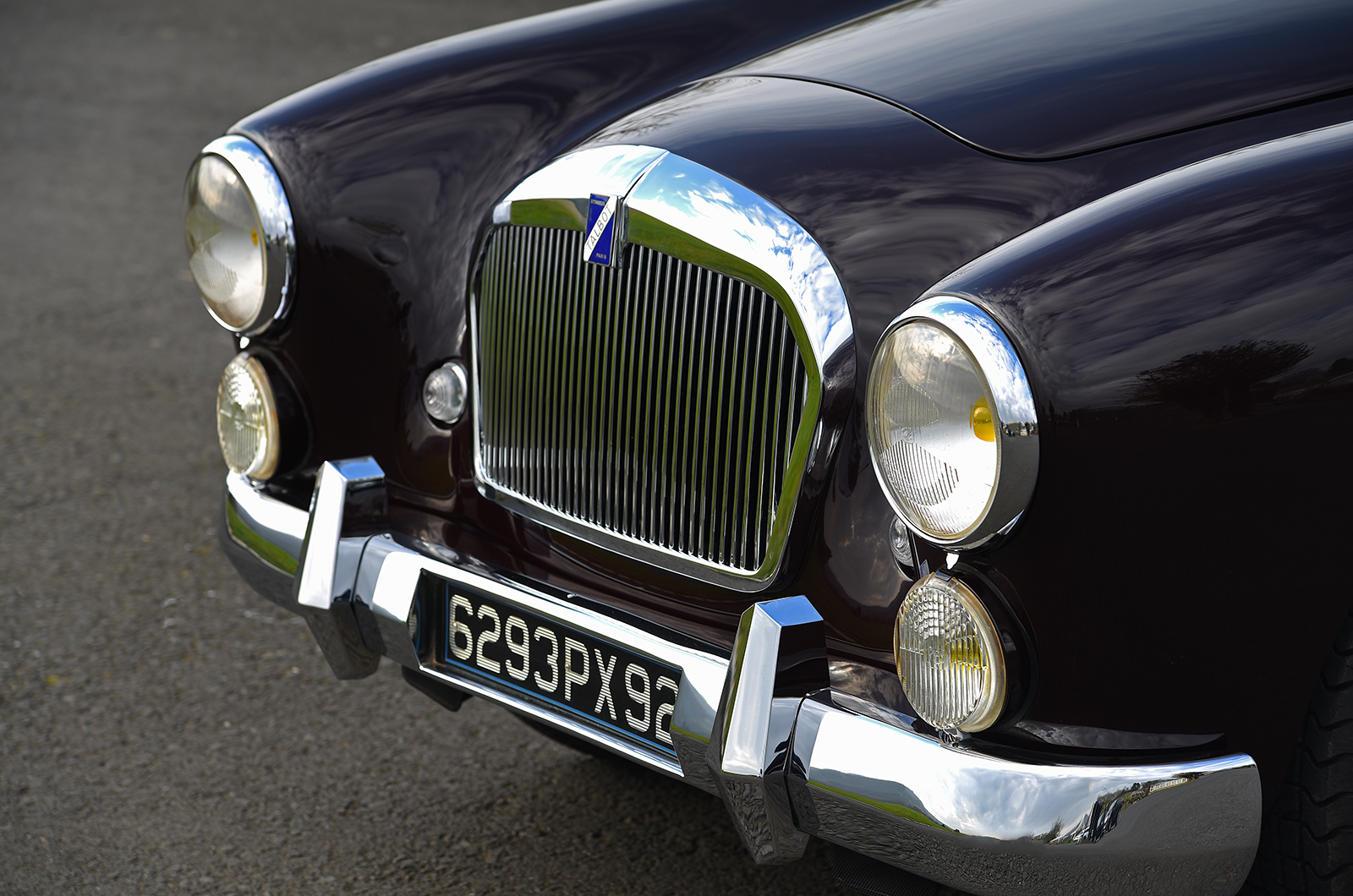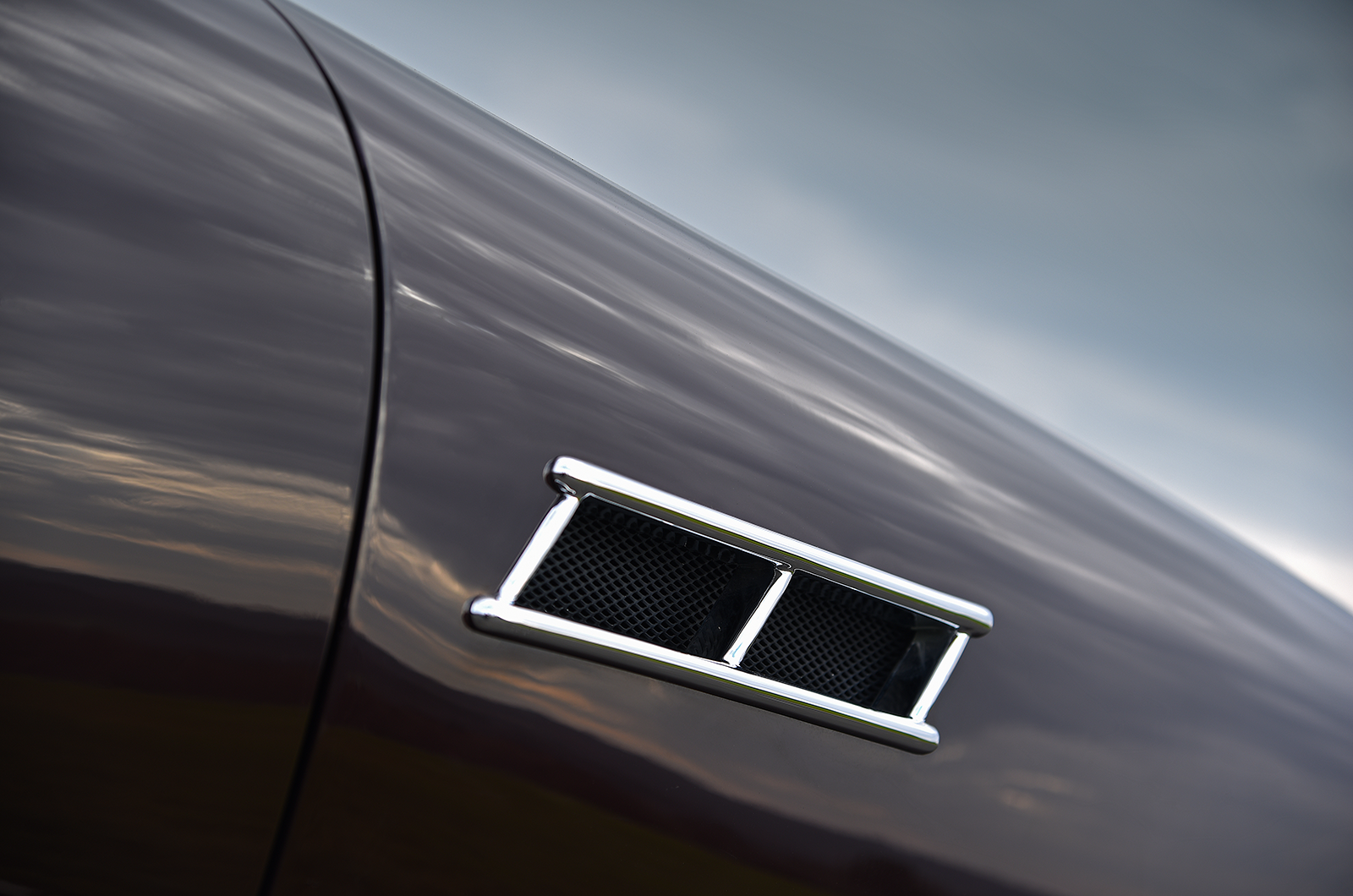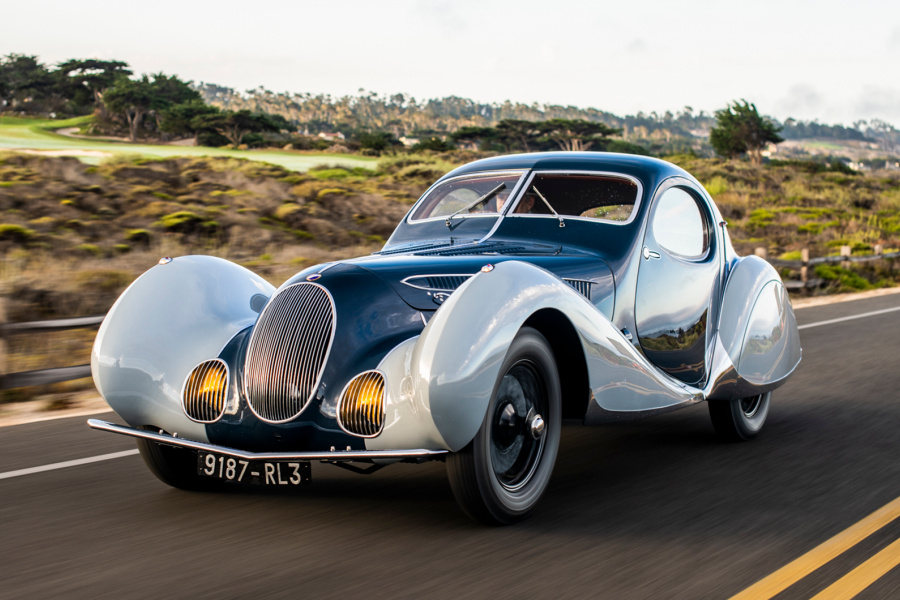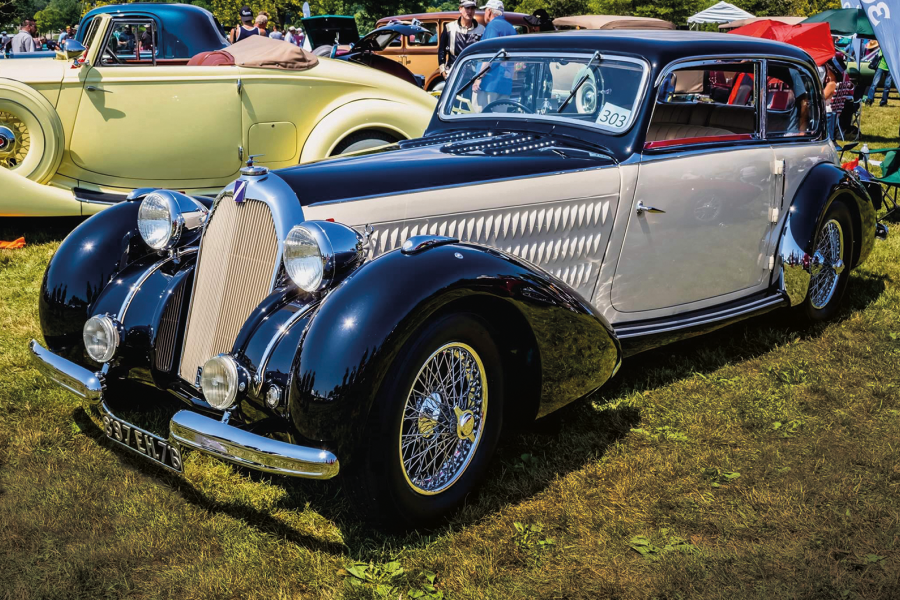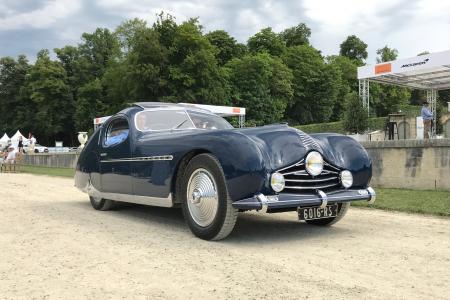As supplied it was painted black, with chrome wire wheels, beige leather and the wing vents attributed to fewer than half the cars built.
The Car Barn in Beamish imported it from Japan as a project.
Little is known of its history, but the restoration pictures show an apparently complete, sound car that had acquired a coat of blue paint.
Many of the GSL’s functions are operated using lollipop-shaped switches in the cabin
It is now fully restored, with a colour change to a deep shade of Dubonnet Rosso, new leather throughout and lots of skilled carpentry hours expended on those ash-framed doors.
Larger in the metal than it appears in photos, something about its proportions tells you that this is really a pre-war car in post-war costume.
A glance underneath at the box-section chassis – drilled for lightness on some GSLs – shows that strength rather than weight-saving was the order of the day, but with pleasing details such as the air scoops on the brake drums and a finned aluminium sump.
The Talbot-Lago T26 GSL begs to be driven briskly
The gearbox is huge, but doesn’t intrude much into the legroom.
Your eye is drawn to the angular cut of the overriders on the assertive bumpers, a slightly bulbous roofline and then the gentle, blunted fins producing a ready-to-pounce profile.
The curved, three-section Plexiglas rear window flows into the domed roof at an angle that allows you to sit in the rear seats – which fold down to make a luggage platform – with headroom to spare and adequate space for your legs.
The basic controls inside the Talbot-Lago T26 GSL are satisfying to use
Were it not almost filled by the spare wheel, the boot – which has to be opened to access the giant, 90-litre fuel tank – would also be usefully big.
In the front you perch on wide, flat seats that make no pretence at offering side support, knees splayed around a truly enormous steering wheel with four sprung spokes.
The casual spread of six clear, white-on-black Jaeger instruments on the flat, leather-covered dashboard has a no-nonsense feel that suits the GSL’s character – veneer wouldn’t be in keeping, somehow.
The GSL’s engine is slow to warm up, but provides a throaty growl once it gets going
You operate lights, wipers and other functions by way of unidentified, toffee-coloured, lollipop-shaped plastic knobs.
The horns and headlamp flashers are worked off spindly stalks on the left of the steering column, while to the right is the quadrant for gear selection, with reverse at the top, fourth at the bottom; ‘pont mort’ is neutral.
Magnificent to the ear, satisfying to the touch, the GSL is a seat-of-the-pants ride with a raw, physical element that suggests you drive it briskly and, if possible, well.
The sculpted rear fins are an attention-grabbing feature on the Talbot-Lago T26 GSL
Its lusty engine, slow to warm up, has a throaty, ‘vintage’ sound and a torquey character.
It is not silky or even especially smooth, but it supplies a romping gait though the gears.
The speed of your shifts is controlled only by how quickly you can push and release the ‘clutch’ – really a gear-selection pedal controlling the various brake bands, cone clutches and the train of epicyclic gears that hum and moan beneath the floorboards.
The three-section Plexiglas rear window makes the cabin light and airy
Heavy with muscle rather than flab, this big, slightly brutish car corners tidily.
If it rolls you don’t notice it from inside and, with little to blur the messages between the skinny patch of tyre on the road and the palms of your hands, steering feel is in abundance, even if the sheer diameter of the helm makes the movements seem coarse.
Exhilaratingly noisy in all the right ways, the Talbot is eager to get into top and stretch its legs, bowling along with torque to burn and revs to spare in the grand style that was its birthright.
‘Larger in the metal than it appears in photos, something about its proportions tells you that this is really a pre-war car in post-war costume’
The imposing views down its shapely bonnet summon every cliché there is about romantic high-speed trips along the straight, tree-lined, sun-dappled French roads of your imagination.
Perhaps even more fascinating than the car is its creator, Tony Lago, whose weakness for the glamour of competition meant the money to build road cars was always in even shorter supply than the customers to buy them.
While his staff struggled with 40-year-old tools, he remained a great believer in racing as a way of proving and promoting the product.
The Talbot-Lago T26 GSL has recently been restored, including a colour change to a deep shade of Dubonnet Rosso
This slippery character was also an undeniably talented engineer who would earn the Légion d’Honneur for the motorsport victories his rugged, reliable T26C cars brought to his adopted home.
But that didn’t cut much ice when Lago’s creditors caught up with him for the third and final time in the late 1950s.
With his glory days long behind him, and too old to start again, he passed away in December 1960, aged just 66.
Images: Will Williams
Thanks to: Car Barn
Factfiles
Talbot-Lago T26 GSL
- Sold/number built 1953-’55/19
- Construction steel chassis, steel and aluminium body over ash frame
- Engine iron-block, alloy-head, dohc 4482cc ‘six’, triple Solex carburettors
- Max power 210bhp @ 4500rpm
- Max torque n/a
- Transmission four-speed preselector, RWD
- Suspension: front independent, by wishbones, coil springs rear live axle, leaf springs; friction and telescopic dampers f/r
- Steering rack and pinion
- Brakes drums
- Length 15ft 8in (4775mm)
- Width 6ft (1850mm)
- Height 5ft 2in (1590mm)
- Wheelbase 9ft 5in (2900mm)
- Weight 3549Ib (1610kg)
- 0-60mph 12 secs
- Top speed 122mph
- Mpg n/a
- Price new n/a
- Price now £350,000*
*Price correct at date of original publication
READ MORE
Concours sensation: Talbot-Lago T26 Grand Sport
Bugatti Type 68: the missing link
Rolls-Royce Phantom V: star conveyance
Martin Buckley
Senior Contributor, Classic & Sports Car
